Archive for the ‘USCIS’ Category
Thursday, September 13th, 2012
The Social Security Administration has released an informative brochure for DACA applicants who will be applying for social security cards. After you receive your Employment Authorization Card (I-766) from USCIS, you can apply for a Social Security number. You must show one of the following original documents or a certified copy to evidence age and identity:
- Foreign Birth Certificate
- Foreign Passport
- US military record
- US military identification card
- Religious record showing age or date of birth
- US driver’s license
- US state-issued identification card
- School record showing age or date of birth
- School identification card; or
- Copy of medical record
Please note, while you may have provided photocopies of the above documents to USCIS, Social Security requires original documents or copies certified by the agency that issued them. They cannot accept photocopies or notarized copies. They must independently verify the documentation you provide. For more information, visit www.socialsecurity.gov or call toll-free, 1-800-772-1213.
For questions concerning DACA, please contact our office at 562 612.3996 or email: info@immigrationcompliancegroup.com.
Posted in DACA | DAPA, Social Security, USCIS | Comments Off on DACA: Social Security Card Guidance
Friday, September 7th, 2012
The Department of Homeland Security issued an update today that the Department of Homeland Security (DHS) is working to resolve this issue and will have a fix on September 14, 2012.
:::::::::::::::::::::::::::::
Without any advance notice, the CBP has made changes that affect the I-9 form by no longer issuing paper I-94 cards and no longer stamping I-20 forms for F and M student visas, or form DS-2019 Certificate of Eligibility for Exchange Visitors and Foreign Students, affecting both J and F visa holders.
Customs and Border Protection is in the process of automating traveler arrival records (I-94 cards) to streamline passenger processing. The current processing time for entering foreign visitors’ travel information into the I-94 database is 30 days or more. This does not affect the majority of foreign travelers visiting for business or leisure and will not affect any visitor’s record of departure. But it will greatly influence how you document Section 2 of the I-9 form for the nonimmigrant employee that produces a List A foreign passport with an I-94 entry card.
PLEASE NOTE: With the newly proposed 2-page I-9 form, no guidance has as yet been provided regarding the I-94 card as an acceptable List A document in concert with a foreign passport. We will keep you posted concerning these changes as soon as we receive new guidance. In the meantime, we recommend that you print out this information and attach it to any new employee’s I-9 form who would normally produce an I-94 record (but doesn’t have one and is waiting to access an electronic version) along with a foreign passport as a List A document.
CBP has suggested the following: Nomiggrants may need to prove their legal-visitor status within the first 30-45 days of their U.S. stay to:
Employers;
Motor vehicle registration or drivers’ licensing agencies;
The Social Security Administration;
U.S. Citizenship and Immigration Services; or
Universities and schools.
If during this timeframe, visitors need to provide evidence of legal status they should include the following:
Unexpired foreign passport; and
Country of Citizenship
CBP Arrival/Departure Record, Form I-94 (if issued)
Contact CBP for more information or with questions.
Tel: (877) CBP-5511
TTD: (866) 880-6582
If a state benefit granting agency rejects an unstamped Form I-20/DS-2019, applicants may make an appointment with USCIS online through InfoPass and take their Form I-20/DS-2019 to their local USCIS office to be stamped. ( InfoPass ) This transitional step will end on Nov. 21, 2012.
International students and scholars who encounter issues with their state or federal benefit applications should continue to contact the Immigration and Customs Enforcement Student and Exchange Visitor Program (SEVP) at (703) 603-3400 or SEVP@dhs.gov.
Please feel free to contact our office should you have questions concerning these changes, 562 612.3996 or email info@immigrationcompliancegroup.com
Tags: CBP, DS-2019 form, Electronic I-94 card, F Visa, I-9 Form, I-9/E-Verify News, I-94 Card, ICE, Immigration News, J Visa, Legal Workforce, M Visa, New I-9 Form, Student Visas, USCIS
Posted in Customs & Border Protection(CBP), Employer Compliance, I-9/E-Verify News, ICE, Immigration Legislation, Immigration News, USCIS | Comments Off on Update: CBP Makes Changes Affecting I-9 Form, F, M and J Visa Stamping
Thursday, August 16th, 2012
The Department of Justice Office of Public Affairs recently published a press release pertaining to the employment of two refugees resolving allegations that the company discriminated under the anti-discrimination provision of the Immigration and Nationality Act (INA), when it impermissibly delayed the start date of two refugees after requiring them to provide specific Form I-9 documentation. Best Packing’s violations occurred when they required the refugees to supply the company with additional Form I-9 verification documents in excess of the law. The claim alleged that other non-refugee employees were not required to supply documents other than state issued licenses and social security cards.
In two charges filed with the department, the refugees alleged that they were not allowed to begin employment until they produced unexpired, Department of Homeland Security-issued employment authorization documents, despite the fact that they initially presented sufficient documentation for employment eligibility verification purposes. The charging parties had presented unexpired state identification cards and unrestricted Social Security cards. The state ID’s and unrestricted SS cards were deemed insufficient proof of work authorization.
It is necessary for all those charged with Form I-9 processing at your organization to be very familiar with the list of acceptable documents and to have a thorough understanding of the fact that each employee has the right to present a list A document or a combination B plus C document as long as they are acceptable documents, appear to be genuine and represent the employee that is before you.
Under the settlement agreement, Best Packing agreed to pay $4,379 in back pay and comply with all the requirements of the INA. Understanding the Form I-9 requirements for verifying refugee/asylee(s) will prevent your company from falling victim to similar discriminatory hiring practices.
The process by which an employer is required to verify the employment eligibility of a refugee/asylee(s) when presented with documentation other than the above-referenced List B plus List C combination, can be a bit complicated. Let’s review this.
Asylees and Refugees are individuals seeking the protection of the United States due to persecution suffered in the home country based upon: race, religion, nationality, social group, or political ideology. These individuals are authorized to work in the US because of their immigration status. When presented with documentation of asylum or refugee status, it is advisable to be aware of the following in regard to examining the I-9 form and the documents presented:
SECTION 1:
- The employee should check the “An alien authorized to work” box
- Write the I-94 or Alien Registration Number in the first space
- Write “N/A” in the second space, because their employment authorization does not expire

SECTION 2:
Acceptable Documents are I-94, I-766, or their Employment Authorization Document also known as an EAD card
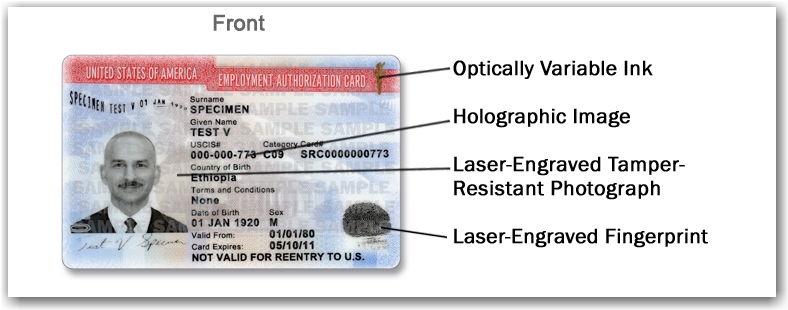
NOTE: this section presents two different scenarios that require strict attention to time restrictions and combinations of required documents to be presented in order to comply with the USCIS regulations. To complete this section choose from the applicable scenarios below:
Scenario One: Refugee presents a Form I-94:
When presented with a Form I-94 containing an unexpired refugee admission stamp, the employer must accept it as a receipt establishing both employment authorization and identity for 90 days. After 90-days, the employee must present either an EAD or a combination of a List B document and List C (an unrestricted social security card.)
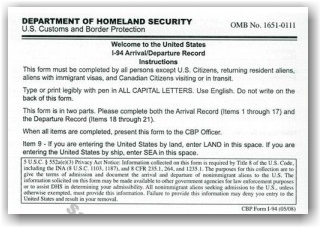

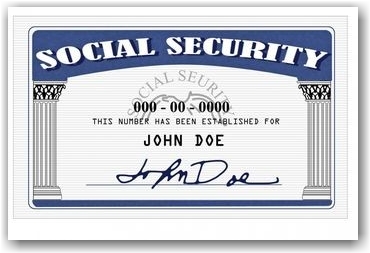
Scenario Two: Asylee presents a Form I-94:
An employer must accept Form I-94 or Form I-94A with one of the stamps or notations below indicating asylee status:
- Asylum granted indefinitely
- 8 CFR 274a.12(a)(5)
- INA 208
This is a List C document that does not require/contain an expiration date. However, the asylee will need to present a List B identity document with this Form I-94.
*Decisions from immigration judges granting asylum are not acceptable.
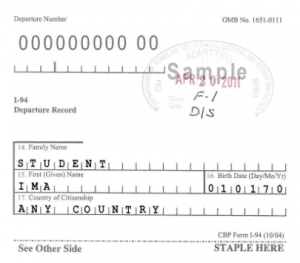

For further assistance on training your company’s hiring personnel on all of the requirements of Form I-9 compliance, contact one of our immigration professionals at info@immigrationcompliancegroup.com or call 562 612.3996.
Tags: Best Packaging I-9 Ruling, DOJ, I-9 Acceptable Documents, I-9 Anti-Discrimination Provision, I-9 Discrimination, I-9 Document Examination, I-9 for Refugees/Asylees, I-9 Over-Documentation, I-9 Training, I-9/E-Verify News, ICE, OSC, Worksite Enforcement
Posted in Employer Compliance, I-9/E-Verify News, ICE, Immigration News, Uncategorized, USCIS | Comments Off on Form I-9 How To Guide: Employing Refugee/Asylee(s)
Tuesday, August 7th, 2012
By: Timothy Sutton, Communications Editor
 The United States Citizenship and Immigration Services (USCIS) have released a brochure, flyer, information on avoiding scams and hosted a teleconference regarding the launch date of the Deferred Action Childhood Arrivals (DACA) Application effective August 15, 2012. USCIS has provided a wealth of detailed information in various forms to clarify the deferred action application procedures. The popular media format of the flyer will likely be the most effective educational tool used with those eligible for the program. The timeline format and accompanying info-graphics are matched with concise language that aid the reader’s understanding.
The United States Citizenship and Immigration Services (USCIS) have released a brochure, flyer, information on avoiding scams and hosted a teleconference regarding the launch date of the Deferred Action Childhood Arrivals (DACA) Application effective August 15, 2012. USCIS has provided a wealth of detailed information in various forms to clarify the deferred action application procedures. The popular media format of the flyer will likely be the most effective educational tool used with those eligible for the program. The timeline format and accompanying info-graphics are matched with concise language that aid the reader’s understanding.
Below are some highlights of the latest updates to the application procedure shared by USCIS Director Mayorkas on Friday, August 3, 2012:
Requesting Deferred Action
The government filing fees will be $465 in total for the deferred action application, the employment authorization document and the biometrics/background check.
Director Mayorkas stated that the information provided to USCIS on a request for Deferred Action (DAC)A request is protected from disclosure to U.S. Immigration and Customs Enforcement (ICE) and U.S. Customs and Border Protection (CBP) for the purpose of immigration enforcement proceedings unless the requestor meets the criteria set forth in USCIS’s Notice to Appear guidance (
www.uscis.gov/NTA). Individuals whose cases are deferred pursuant to the consideration of deferred action for childhood arrivals process will not be referred to ICE. The information may be shared with national security and law enforcement agencies, including ICE and CBP, for purposes other than removal, including for assistance in the consideration of deferred action for childhood arrivals, to identify or prevent fraudulent claims, for national security purposes, or for the investigation or prosecution of a criminal offense. The above information sharing policy covers family members and guardians, in addition to the requestor.
There is no reapplication or appeals process for a failed application.
Biographic and biometric background checks are required. Immigration crimes are not factored into criminal history.
At this time, extensions of the 2 year deferred action status will be available.
Unlawful presence status is put on hold once deferred action status is granted.
If denied, cases will only be referred to removal proceedings under exceptional circumstances.
Qualifying For Deferred Action
- Individuals must not have current immigration status.
- Individuals detained by USCIS may only request qualification through their detention officer.
What documents will be required? Financial, medical, school, employment, and military records sufficient to show both entry before age of 16, as well as residence for at least five years preceding June 15, 2012. Affidavits alone will generally not be sufficient evidence, but may support a shortcoming in documentation regarding casual departures or continuous residence. USCIS will not accept affidavits in support of meeting the below requirements. You may request consideration of deferred action for childhood arrivals if you:
- Were under the age of 31 as of June 15, 2012;
- Came to the United States before reaching your 16th birthday;
- Have continuously resided in the United States since June 15, 2007, up to the present time;
- Were physically present in the United States on June 15, 2012, and at the time of making your request for consideration of deferred action with USCIS;
- Entered without inspection before June 15, 2012, or your lawful immigration status expired as of June 15, 2012;
- Are currently in school, have graduated or obtained a certificate of completion from high school, have obtained a general education development (GED) certificate, or are an honorably discharged veteran of the Coast Guard or Armed Forces of the United States; and
- Have not been convicted of a felony, significant misdemeanor, three or more other misdemeanors, and do not otherwise pose a threat to national security or public safety. Driving under the influence is considered a significant misdemeanor.
- Note: *Circumstantial evidence will not be considered for age on June 15, 2012 or school/veteran status.
- Travel prior to August 15, 2012 must be brief, casual, and innocent in nature.
- If false or misrepresented information appears on the application, unlawful status is upgraded to enforcement priority, subject to immediate criminal prosecution and removal.
- There is no expedited processing for deferred action.
- Employment authorization requires demonstration of “an economic necessity for employment.”
- Relatives are not covered under deferred action unless they independently qualify
- TRAVEL: Question – If my case is deferred pursuant to the consideration of deferred action for childhood arrivals process, will I be able to travel outside of the United States? Not automatically. If USCIS has decided to defer action in your case and you want to travel outside the United States, you must apply for advance parole by filing a Form I-131, Application for Travel Document and paying the applicable fee ($360). USCIS will determine whether your purpose for international travel is justifiable based on the circumstances you describe in your request. Generally, USCIS will only grant advance parole if you are traveling for humanitarian purposes, educational purposes, or employment purposes. You may not apply for advance parole unless and until USCIS defers action in your case pursuant to the consideration of deferred action for childhood arrivals process. You cannot apply for advance parole at the same time as you submit your request for consideration of deferred action for childhood arrivals. All advance parole requests will be considered on a case-by-case basis.
Subscribe to our blog for breaking news and updates on deferred action and other immigration laws. We are starting to work with clients on documentation gathering. Should you have questions or wish to engage the services of our office, please contact us at 562 612.3996 or email us at: info@immigrationcompliancegroup.com
Resources: The USCIS “How do I Guide” – USCIS FAQs
Tags: Deferred Action Childhood Arrivals, Deferred Action Effective date 08/15/2012, EAD Card, Employment Authorization, Immigration Detention, Immigration Reform, Legal Workforce, Prosecutorial Discretion, Removal Proceedings, USCIS, Voluntary Departure
Posted in Comprehensive Immigration Reform, DACA | DAPA, Immigration Legislation, Immigration News, USCIS | Comments Off on “D.A. Day” 08/15/12: Deferred Action Ready For Launch | Update from Immigration Compliance Group
Friday, August 3rd, 2012
 By: Timothy Sutton, Communications Editor
By: Timothy Sutton, Communications Editor
Shortly after ICE began their Form I-9 audit of the San Antonio based sushi chain, Sushi Zushi, an exodus of employees forced the company into a weeklong-statewide shutdown. After an internal announcement by Sushi Zushi management to employees of the routine audit, a wave of scared employees did not return to their jobs on Friday Morning. A public statement was issued by Sushi Zushi’s public relations spokesperson; Judy McCarter detailing the company’s decision:
STATEMENT FROM SUSHI ZUSHI, Friday, July 27, 2012
Sushi Zushi has temporarily suspended its operations and closed its restaurants in San Antonio, Austin and the DFW Metroplex. We plan to resume operations as soon as possible.
The decision to close the restaurants was made at Sushi Zushi today by executive management due to an unanticipated internal reaction to news of a routine I-9 audit. Several vital employees have chosen not to report to work. This has affected our ability to provide our expected level of service to guests. CEO Alfonso Tomita is returning from travels outside the country.
Sushi Zushi’s policy is to comply with all federal, state and local laws and regulations. And Sushi Zushi has made its best efforts to comply with I-9 requirements always done appropriate due diligence on all its staff. Sushi Zushi is working with legal counsel to respond to the government’s audit.
We wish to be clear – there was no raid by the government on our operations. Nor has any employee been detained by the government or terminated by the company. Sushi Zushi is responding to a routine I-9 audit. We apologize in advance for the inconvenience and appreciate the patience of our loyal guests while we work through this issue.
Company management immediately posted want ad’s on Craigslist and Facebook. Their customers posted their concerns across social media, including accusations of mismanagement that surfaced on reddit.com. In the midst of this audit meltdown, an employee announced via facebook that he was promoted from delivery driver to sushi chef. With the company’s reputation spinning out of control, their facebook page had posts of former kitchen employees who remarked, “The food won’t be the same without us,” while other employees joked with friends that they had a week-off work to “fill out their I-9 forms.”
Before ICE issues a dollar of fines or fees, Sushi Zushi will suffer hundreds of thousands in loses and devastating harm to their reputation. Sushi Zushi employees fled because they were not educated on the differences between an I-9 audit and deportation raids. Clearly, today’s ICE audits are shaping up to be equally as effective in deterring unlawful employment as raids of the past. To prevent your company from becoming the next Sushi Zushi, contact our immigration professionals for their expert knowledge on Form I-9 compliance, and sign up to receive our information and visit our Employer Resource Center: www.I-9Audits.com
Tags: I-9 AUDIT, I-9 Fines, I-9 management, I-9 Training, I-9/E-Verify News, ICE Audit, Legal Workforce, Sushi Zushi Audit, Undocumented Workers, Worksite Enforcement
Posted in I-9/E-Verify News, ICE, Immigration News, USCIS | Comments Off on Form I-9 Audit Prompts Sushi Zushi Closure – Fish on ICE
Sunday, July 29th, 2012
 By: Timothy Sutton, Communications Editor
By: Timothy Sutton, Communications Editor
Wait Wait… Don’t Tell Me! is a comedic quiz program on NPR, testing listener’s knowledge of current events against some of the best and brightest in the news world. While figuring out what’s real news versus what’s made up, the show’s host presents a scenario to the contestant to determine if the scenario is fact or fiction. If you weren’t tuned into C-SPAN, you may have legitimately mistaken the House oversight committee’s interview, of the Secretary of the Department of Homeland Security (DHS) Janet Napolitano, as the latest episode of Wait Wait.
In this episode, members of the Congressional oversight committee rapidly fired questions at Napolitano, cutting short her responses, attempting to validate their “real news,” as something more than “made up.” The result, a trial like inquisition reminiscent of the famous scene between Tom Cruise and Jack Nicholson from A Few Good Men, with Napolitano ceremoniously remarking “you can’t handle the truth!” In reality, with grace and imperturbable resolve, Napolitano slowly roasted over the House Committee’s rotisserie.
Attacks upon the DHS Secretary by Chairman Lamar Smith (R-TX), Sensenbrenner (R-WI), Conyers (D-MI), and many more; indicated summary judgment has been rendered against the DHS for their approach to immigration enforcement, particularly in the areas of: visa overstays, boarder security, and deferred action. The business community should take note; Napolitano’s significant immigration reforms have yet to satisfy Congressional discontent. Looking forward, expect tighter regulation of business immigration under the guise of immigration overhaul.
Here are some DHS immigration reform highlights Napolitano submitted to Congress:
- Current DHS immigration reform focuses resources on repeat immigration law violators
- Numerous improvements were made to welcome business people…staying true to our history as a nation of immigrants
- Deterring Employment of Aliens not authorized to work by:
- Eliminating high-profile raids and focusing on compliance through criminal prosecution of egregious employer violators, Form I-9 inspections, civil fines, and debarment
- Since 2009, ICE audited more the 8,079 employers, debarred 726 companies, and imposed $87.9 million in financial sanctions
- Educated the business population through instituting:
- E-Verify with more than 385,000 participants
- E-Verify self-check
- Improving Legal Immigration:
- Streamlining path for EB-5 entrepreneurs and clarifying the EB-2 classification
- Instituted Entrepreneurs in Residence program and proposed regulatory changes in the Federal Register in April 2012 to minimize delays of family based immigration petitions
- Reduced processing of benefit requests through Electronic Immigration System of Registration (ELIS)
- Implemented “Study in the States” initiative to attract international students through a streamlined visa process
- Comprehensive Immigration Reform:
- Supporting the Supreme Court’s decision on Section 2(B) of S.B. 1070
Napolitano capped off her remarks on immigration stating, “only a nationwide solution will resolve the challenges posed by the current immigration system.”
Despite the Congress clearly conveying their message to DHS, “Wait wait, don’t tell me, you think you’re doing a good job…” Napolitano’s focus on streamlining existing immigration policies is positive news for US businesses. Until the promise of streamlining comes to fruition, removing your business from the auditing radar, enrolling in E-Verify, and becoming Form I-9 compliant remain immigration best practices.
If you can handle the truth about current immigration policies, subscribe to our blog and stay informed by checking out our I-9 Employer Resource Center and join our LinkedIn Group.
Tags: Comprehensive Immigration Reform, Deferred Action, Department Of Homeland Security (DHS), DHS Secretary Napolitano, E-Verify, E-Verify Self Check, EB-5 Investor Visa, Entrepreneurs in Residence, form I-9, I-9/E-Verify News, ICE, ICE investigations, Legal Workforce, Napolitano's Congressional Testimony, Study in the States, US Immigration Policy
Posted in Comprehensive Immigration Reform, Congress, Department Of Homeland Security (DHS), I-9/E-Verify News, ICE, Immigration Legislation, USCIS | Comments Off on DHS Secretary Roasted By Congressional Committee | Immigration Compliance Group News
Wednesday, July 18th, 2012
 By: Timothy Sutton, Communications Editor
By: Timothy Sutton, Communications Editor
In an effort to assist participating employers comply with the user requirements of E-Verify and to help improve participants’ overall use of the program, USCIS issued two self-assessment guides in June. Both guides are substantively similar, but are procedurally designed to assist two sets of users, either web-access or direct access users. Voluntary E-Verify participants will benefit from this recent assistance publication by following the eight-part checklist provided therein.
The self-assessment checklist covers, post-enrollment activities, creation of cases, photo matching, tentative nonconfirmation, DHS referral, SSA referral, final case resolution, and final case closure statements. USCIS touts E-Verify as an easy-to-use online tool, but warns, “Employers may be subject to legal action for some types of E-Verify misuse.” The self-assessment guide highlights below may surprise current E-Verify users who may unwittingly be noncompliant:
Monitored Activities Common Mistakes:
- Duplicate cases for same employee
- Verifying employees hired before 11/7/86
- Immediately terminating employee who receive a tentative nonconfirmation (TNC)
- Failing to create a case by the third day after employee started work for pay
- Creating cases for employees hired before E-Verify participant enrollment
Post-Enrollment Activities: Do web services comply with interface control agreements?
Creation of Cases: Is all personally identifiable information safeguarded at all times, with only minimal information retained?
Photo Matching: Are document photos matched to the photo on E-Verify rather than to the employee?
Tentative Nonconfirmation: Do case closure statements notify DHS if an employee who receives a TNC chooses not to contest is not terminated?
DHS & SSA Referral: Do E-Verify participants and employees both sign the English-language version of the referral letter?
Final Case Resolution: Upon receipt of a “DHS No Show” message, does the employee contact DHS within the required time?
Final Case Closure: Does the user file completed Form I-9 and all attachments in a secured location?
Although the self-assessment is a valuable tool to assist employers with E-Verify compliance, the checklists do not render a company audit proof. For assistance implementing best practices for E-Verify and other immigration related topics contact one of our immigration professionals.
Want to stay informed:? Check out our I-9 Employer Resource Center and join our LinkedIn Group
Tags: DHS Referal, E-Verify Case Resolution, E-Verify Direct Access Guide, E-Verify Self-Assessment Guide, E-Verify Web Service Guide, I-9 Form, I-9/E-Verify News, Immigration News, Legal Workforce, Photo Matching, SSA Referral, TNC, USCIS
Posted in I-9/E-Verify News, ICE, Immigration News, USCIS | Comments Off on E-Verify Self-Assessment Guides: A Good Tool but does not render Employer Audit Proof
Thursday, May 24th, 2012
By: Timothy Sutton, Communications Editor
 Kansas Senator Jerry Moran (R-Kan.) has introduced a Senate Bill named S.3217 Startup 2.0, a bill to jump-start economic recovery through the formation and growth of new business, and for other purposes. Numerous senators support Startup 2.0, which will infuse the skilled labor market with an additional 50,000 visas for immigrants with post-baccalaureate degrees in any field listed with the Department of Homeland Security STEM Designated Degree Program (science, computers, and medicine). Applicants can be students seeking degrees or professionals practicing in any of the enumerated STEM fields.
Kansas Senator Jerry Moran (R-Kan.) has introduced a Senate Bill named S.3217 Startup 2.0, a bill to jump-start economic recovery through the formation and growth of new business, and for other purposes. Numerous senators support Startup 2.0, which will infuse the skilled labor market with an additional 50,000 visas for immigrants with post-baccalaureate degrees in any field listed with the Department of Homeland Security STEM Designated Degree Program (science, computers, and medicine). Applicants can be students seeking degrees or professionals practicing in any of the enumerated STEM fields.
Additionally, Startup 2.0 allocates 75,000 visas for qualified entrepreneurs who (1) hold a nonimmigrant visa or have or will complete a STEM listed degree, (2) register a business that employs two or more full-time non-relative employees and invests or raises at least $100,000 that (3) grows the business to an average of five employees within a three year period.
At first glance, Startup 2.0 is a positive indicator that immigration reform may be shifting toward pro-business legislation. This bill would create access to citizenship for educated foreign entrepreneurs who may lack the funding necessary to apply for an EB-5. Startup 2.0 may also free up the quota on H1-B visas, particularly the Master’s degree exception. The current H1-B quotas as of May 18, 2012 are 42,000 for the H-1B regular cap (65,000 quota) and 16,000 for the US Master’s Degree cap (20,000 quota). The cap is expected to be reached within 2-3 weeks.
To stay informed about the latest immigration news and updates subscribe to our blog and immigration and I-9 newsletters here.
Tags: H-1B Quota, H-1B Visas, Investor Visas, Jerry Moran (R. Kansas), S.3217, Skilled Labor Market, Skilled Workers, Specialty Occupations, Startup 2.0, STEM Designated Degrees, STEM Students
Posted in Department Of Homeland Security (DHS), H-1B Visas, Immigration Legislation, Immigration News, USCIS | Comments Off on Senators Support STEM Immigration Bill | Immigration Compliance Group News
Thursday, May 17th, 2012
By: Timothy Sutton, Communications Editor
The Hamilton Project, at the Brookings Institution held a forum on U.S. immigration on May 15, 2012. US Davis Economist, 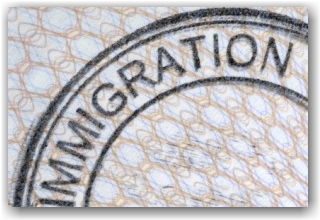 Giovanni Peri, purposed a radical overhaul to the entire immigration system. In short, Peri proposed a national auction system wherein employers bid for employee visas and proceeds of these sales fund local healthcare and education. The auction prices would be set with a reserve to ensure a minimal guaranteed income stream. Uncapped, the market would dictate the number of visas issued annually. This proposal seems to find a common ground between business needs and government regulation, benefiting the low-skilled labor market.
Giovanni Peri, purposed a radical overhaul to the entire immigration system. In short, Peri proposed a national auction system wherein employers bid for employee visas and proceeds of these sales fund local healthcare and education. The auction prices would be set with a reserve to ensure a minimal guaranteed income stream. Uncapped, the market would dictate the number of visas issued annually. This proposal seems to find a common ground between business needs and government regulation, benefiting the low-skilled labor market.
Auctioning low-skilled labor visas should help reduce the population of roughly 11.5 million illegal immigrants. Employers will be able to hire a legal workforce up to the point where auction prices for visas offset low wage savings. At that time, I-9 audits and workplace raids should continue to deter further hiring of illegal immigrants. This larger, stable and legal temporary workforce will help stabilize the economy. Changes are welcomed for companies like 3M that recently experienced a “brain drain.” 3M has been outsourcing science and technology jobs to Asia, citing the instability of the low skilled labor market they rely on to support their laboratories, manufacturing, research and development.
While Peri’s proposals are likely years away from actually being introduced into legislation, public officials like Senator John Cornyn continue to push for business friendly immigration. Senator Cornyn recently introduced legislation that would add 85,000 H-1B temporary visas issued annually to foreign-born engineers, mathematicians, scientists and other high-tech workers. Cornyn reminded the Senate, “We have to remember how this country was built. All of us are sons and daughters of immigrants that showed up here and made our way. We’ve cut off that flow.”
For continued coverage of proposed immigration reform and legislation, as well as the latest developments in immigration politics, subscribe to our blog and immigration and I-9 newsletters here.
Interested in staying current with I-9/E-Verify news and issues? Check out our group on LinkedIn.
Tags: Brookings Institute, H-1B Quota, H-1B Visas, I-9 Form, I-9/E-Verify News, I-9/E-Verify News, Immigration Compliance Group, Immigration Legislation, Immigration News, Immigration Politics, Immigration Reform, Legal Workforce, Senator Cronyn, Skilled Workers
Posted in H-1B Visas, I-9/E-Verify News, ICE, Immigration Legislation, Immigration News, USCIS | Comments Off on Immigration Reform: The Future Of Immigration Policy…Visa Auctions?
Friday, April 27th, 2012
 FY 2013 cap filings are definitely exceeding the rate of the last two years. At this time last year, USCIS had received roughly 10,400 cap filings. As of April 20th, USCIS announced that it’s received 25,000 against the H-1B regular cap, and 10,900 against the master’s degree cap. The amount of cases received in this initial period for FY 2013 is almost twice the number received last year at this time.
FY 2013 cap filings are definitely exceeding the rate of the last two years. At this time last year, USCIS had received roughly 10,400 cap filings. As of April 20th, USCIS announced that it’s received 25,000 against the H-1B regular cap, and 10,900 against the master’s degree cap. The amount of cases received in this initial period for FY 2013 is almost twice the number received last year at this time.
The number of cases received towards the H-1b cap should alert employers who are still considering whether to file H-1b cap cases to take action. Employers should expect that the H-1b cap will be exhausted at a much earlier date than what occurred in the last few years.
As always, Immigration Compliance Group is happy to answer any questions about the H-1b process. If you’re planning to petition for H-1B employment in FY 2013, contact our office ASAP so that your case can be efficiently and promptly filed.
Tags: File H-1B, FY 2013 H-1B Cap, H-1 Master's Quota, H-1B Cap, H-1B Regular Quota, Immigration News, Specialty Occupations
Posted in H-1B Visas, Immigration News, USCIS | Comments Off on H-1B Cap Update | News from Immigration Compliance Group













